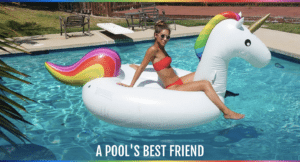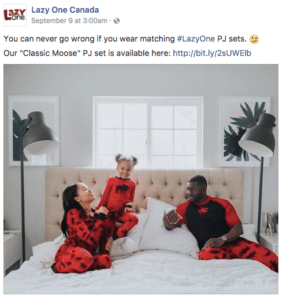Finding Your Brand’s Voice
How To Build Your Brand From The Ground Up By Finding Your Brand’s Identity
Every brand should have a voice, and that voice determines how they will market their products. Whether a brand is marketing through traditional advertising, website promotions or social media marketing, that voice – better known as an appeal – should be consistent with the marketing strategy for the product or service offered. The appeal is what pulls consumers into a company’s brand, but some appeals work better than others for specific products or services.
Here’s a list of the most commonly used appeals, examples of companies that use them and why they work!
1. The Emotional Appeal
Brands that use this appeal are reaching for emotional responses from consumers such as feelings of happiness, longing, loving, sadness and even more broad emotional triggers such as depicting a lifestyle which consumers may long for. More specific emotional appeals are fear and humour.
It excites consumers and triggers a single thought that a home, dream, belief or expectation is attainable simply by purchasing the product.
Check out Lazy One for adorable matching PJ sets for the whole family!
2. The Fear Appeal
This appeal focuses on the negative result of an action or lack of action. Some examples of the fear appeal are campaigns against drunk driving, texting while driving and even smoking.
Why Does It Work?
Using this emotional appeal encourages an immediate change in thought and behaviour. Although this method is very effective, it only works when the subject in question is specific, compelling and possible.
3. The Humour Appeal
Simply put, this appeal makes consumers joyful and laugh. The humour appeal is usually used for boring brands that want to separate themselves from the rest of the market. Some examples of the humour appeal are seen in highly saturated markets such as deodorants, shaving tools, toilet paper and even insurance companies.
Why Does It Work?
Well, first of all, it makes people laugh. Second, it forces consumers to think about the brand and come to appreciate the product or service offered. Third, it separates the brand from the crowded market and finally, sharing. Everyone on social media loves to share humorous clips, videos and articles. The more people share, the more a brand becomes recognized, and that leads to the possibility of a boost in sales. Be wary, though! Using humour at the expense of someone else, such as a gender or specific group of individuals, it has the potential to turn away large target markets. Light-hearted humour is the best way to go!
4. The Rational Appeal
This appeal focuses primarily on the practicality and function of a product. This appeal is completely opposite from the emotional appeal because companies will market a product based on rationality and logic. For instance, some brands use this appeal by showing how a product works, why it’s better than the competing brand and sometimes even claim their prices are lower or their product is more cost efficient. A few examples of industries that use this appeal are cleaning products, household appliances and automobiles.
Why Does It Work?
This appeal works because the message is clear and efficient, it’s helping brands build brand recognition leading to brand loyalty in saturated markets.
AT GIANT FLOATIE, WE ARE CONFIDENT THAT YOU WILL FIND THE ULTIMATE FLOATIE RIGHT HERE, AT THE BEST QUALITY & PRICE.

5. The Sexual Appeal
Everyone has seen at least one advertisement using the sexual appeal, and when they did, they probably strongly considered purchasing the product! Some examples of industries that tend to use a sexual appeal in their marketing are alcoholic beverages, more specifically beer, fragrances and even high-end fashion.

Why Does it Work?
This appeal works because it taps into the secret fantasies of most men and women worldwide. It suggests that buying a specific brand will draw the attention of numerous attractive people.
6. The Bandwagon Appeal
This appeal uses the message “Everyone is using this, so should you!” Industries such as food, medicine, toothpaste, automobiles and cellphones use it to state their product has more benefits, is better than the competing brand or is the most popular.
Why Does It Work?
This appeal is very effective because it affects the consumers’ insecurities by making them feel isolated and feel like they’re missing out on the best product or service offered. It works because consumers don’t like to feel isolated, but sometimes it won’t work if consumers are able to use a rational approach when considering the product.
Why Should You Use An Appeal In Your Marketing Plan?
Using one of these appeals has the ability to strongly impact your brand’s growth. To do so, a company must establish brand recognition by using enticing advertising and promotions. If the right appeal was used in the most efficient manner, this will lead a company to have a more established brand identity. Once the brand is recognized and easily identified by it’s tactics, this will lead to brand loyalty. Consumers will feel a connection to the brand through the appeal used. It’s important to remember to use an appeal that fits your brand best and is coherent with the target market, that way your brand can revel in all the positive outcomes of efficient marketing which will lead to a possible increase in sales and brand loyalty.
Links: Top 5 Appeals, Emotional Appeal, Humour In Marketing, Rational Appeal, Lazy One, Giant Floatie


